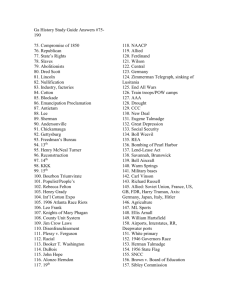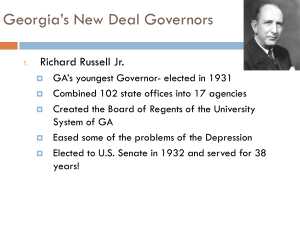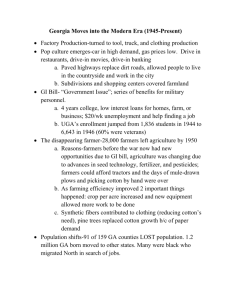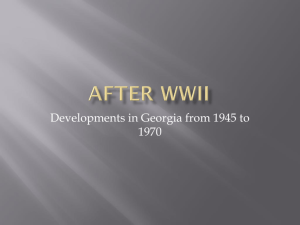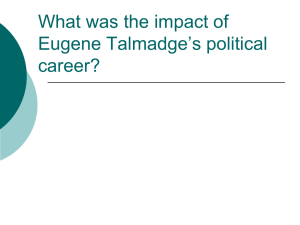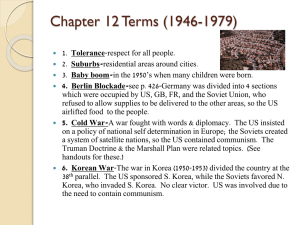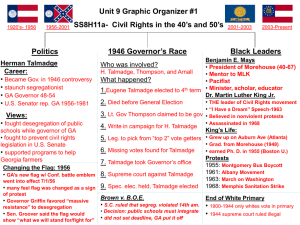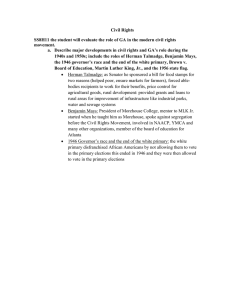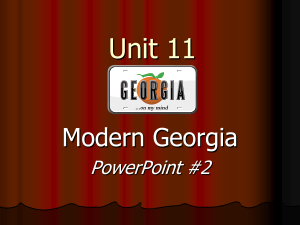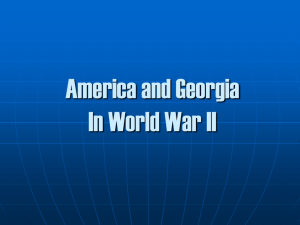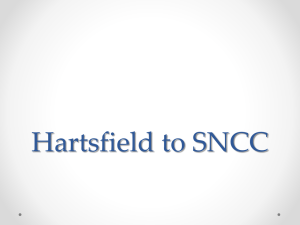Herman Talmadge 1. Son of Eugene 2. part of the 3 governor
advertisement
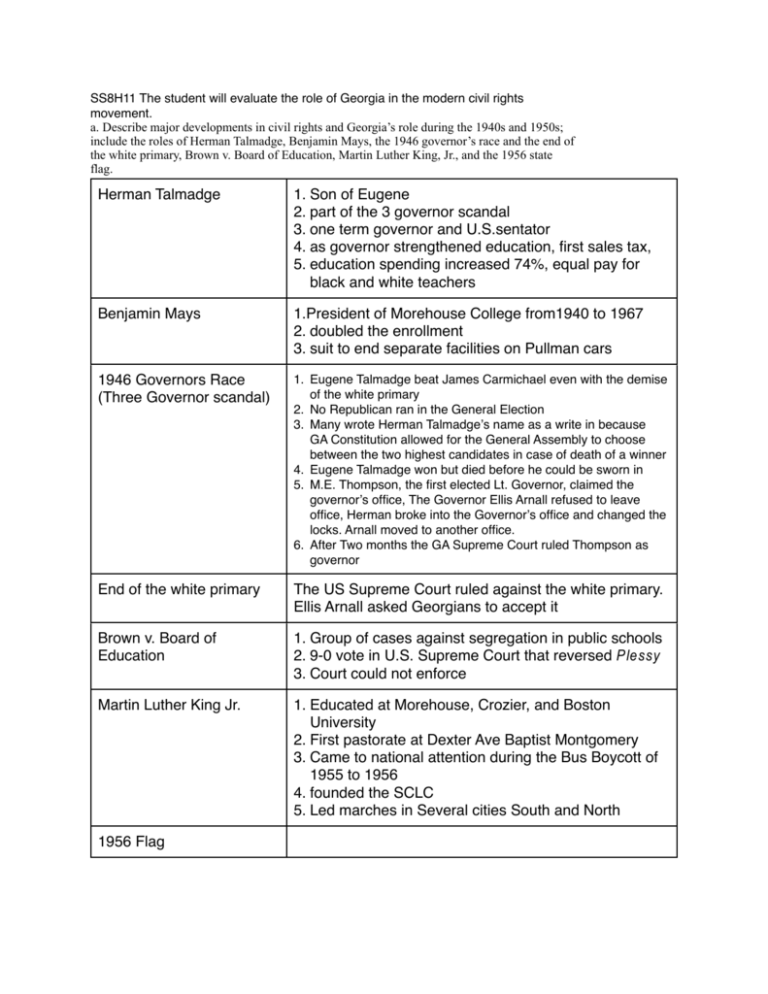
SS8H11 The student will evaluate the role of Georgia in the modern civil rights movement. a. Describe major developments in civil rights and Georgia’s role during the 1940s and 1950s; include the roles of Herman Talmadge, Benjamin Mays, the 1946 governor’s race and the end of the white primary, Brown v. Board of Education, Martin Luther King, Jr., and the 1956 state flag. Herman Talmadge 1. Son of Eugene 2. part of the 3 governor scandal 3. one term governor and U.S.sentator 4. as governor strengthened education, first sales tax, 5. education spending increased 74%, equal pay for black and white teachers Benjamin Mays 1.President of Morehouse College from1940 to 1967 2. doubled the enrollment 3. suit to end separate facilities on Pullman cars 1946 Governors Race (Three Governor scandal) 1. Eugene Talmadge beat James Carmichael even with the demise of the white primary 2. No Republican ran in the General Election 3. Many wrote Herman Talmadge’s name as a write in because GA Constitution allowed for the General Assembly to choose between the two highest candidates in case of death of a winner 4. Eugene Talmadge won but died before he could be sworn in 5. M.E. Thompson, the first elected Lt. Governor, claimed the governor’s office, The Governor Ellis Arnall refused to leave office, Herman broke into the Governor’s office and changed the locks. Arnall moved to another office. 6. After Two months the GA Supreme Court ruled Thompson as governor End of the white primary The US Supreme Court ruled against the white primary. Ellis Arnall asked Georgians to accept it Brown v. Board of Education 1. Group of cases against segregation in public schools 2. 9-0 vote in U.S. Supreme Court that reversed Plessy 3. Court could not enforce Martin Luther King Jr. 1. Educated at Morehouse, Crozier, and Boston University 2. First pastorate at Dexter Ave Baptist Montgomery 3. Came to national attention during the Bus Boycott of 1955 to 1956 4. founded the SCLC 5. Led marches in Several cities South and North 1956 Flag b. Analyze the role Georgia and prominent Georgians played in the Civil Rights Movement of the 1960s and 1970s; include such events as the founding of the Student Non-Violent Coordinating Committee (SNCC), Sibley Commission, admission of Hamilton Holmes and Charlayne Hunter to the University of Georgia, Albany Movement, March on Washington, Civil Rights Act, the election of Maynard Jackson as mayor of Atlanta, and the role of Lester Maddox. SNCC Sibley Commission HAmilton Holmes and Charlayne Hunter Albany Movement March on Washington Civil Rights Act Maynard Jackson Lester Maddox c. Discuss the impact of Andrew Young on Georgia. ______________________________________________________________________________ ______________________________________________________________________________ ______________________________________________________________________________
